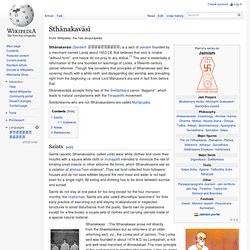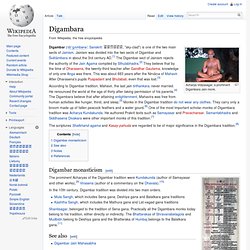

HISTORY OF JAIN - TERAPANTH. Terapanth.com Jainism:- Jainism is the oldest living religion.

It was originally founded by Bhagwan Rishaba in the pre-historical era. Rishabha was the first Jina hence he is often called Adi-natha, the first lord.He is mentioned in most of the Hindu Puranas, Markandeya, Kurma, Vayu,Garuda, Brahmanda, Varaha, Linga, Vishnu, Skandha etc, He was the first Tirthankara (i.e. an omniscient founder), and was followed by 23 others. Bhagwan Mahavera who was the 24th and the last in the line gave shape to the present religion 2546 years ago. The birth of Lord Mahavera was in 599 B.C.in a royal family of Vaishali.
Crucial Ideology Philosophy of soul and Karma: Every living being is a soul , existing in the world from infinite time, passing through the cycles of birth and death. Freedom from passion leading to Emancipation: Soul in the worldly existence undergoes suffering caused by Karma. Terapanth is a religious sect under Swetembar Jain. Table of becoming nuns in each Acharya's are as under. Sthanakvasi. Painting of a Sthanakvasi Jain monk Sthānakavāsī (Sanskrit: स्थानकवासी) is a sect of Jainism founded by a merchant named Lavaji about 1653 CE that believes that soul is nirakar "without form", and hence do not pray to any statue.[1] The sect is essentially a reformation of the one founded on teachings of Lonka, a fifteenth-century Jainist reformer.

Though few considers that principles of Sthanakvasi sect like covering mouth with a white cloth and disregarding idol worship was prevailing right from the beginning i.e. since Lord Mahavira's era and in fact from before that. Sthānakavāsīs accepts thirty-two of the Śvētāmbara canon "Aagams", which leads to natural comparisons with the Terapanthi movement. Śvētāmbarins who are not Sthānakavāsins are called Murtipujaka. Saints[edit] Monks belonging to Sthanakvasi sect of Jainism. Saints do not stay at one place for too long except for the four monsoon months, the chaturmas. The Sthanakwasis are also called by terms as (a) Dhundhiya (searchers); or. Digambara. Acharya Vidyasagar, a prominent Digambara Jain monk.

Digambar (/dɪˈɡʌmbərə/; Sanskrit: दिगंबर, "sky-clad") is one of the two main sects of Jainism. Jainism was divided into the two sects of Digambar and Śvētāmbara in about the 3rd century AD.[1] The Digambar sect of Jainism rejects the authority of the Jain Agama compiled by Sthulabhadra.[2] They believe that by the time of Dharasena, the twenty-third teacher after Gandhar Gautama, knowledge of only one Anga was there.
This was about 683 years after the Nirvāṇa of Mahavir. After Dharasena's pupils Puspadant and Bhutabali, even that was lost.[3] The scriptures Shatkhand-agama and Kasay-pahuda are regarded to be of major significance in the Digambara tradition. Digambar monasticism[edit] Stela at Marhiaji mentioning Jain acharyas The prominent Acharyas of the Digambar tradition were Kundakunda (author of Samayasar and other works),[9] Virasena (author of a commentary on the Dhavala).[10] Shantisagar, belonged to the tradition of Sena gana.